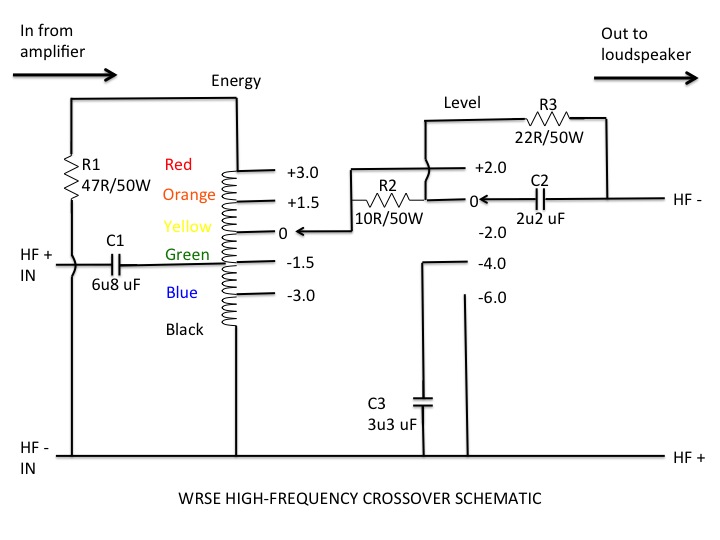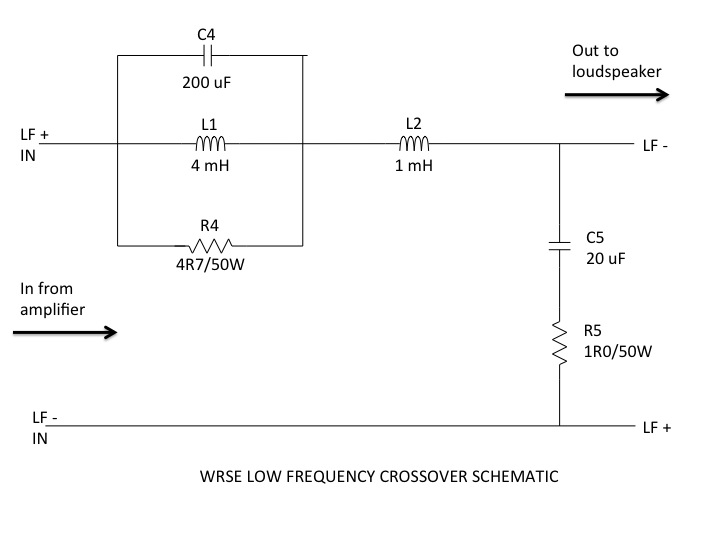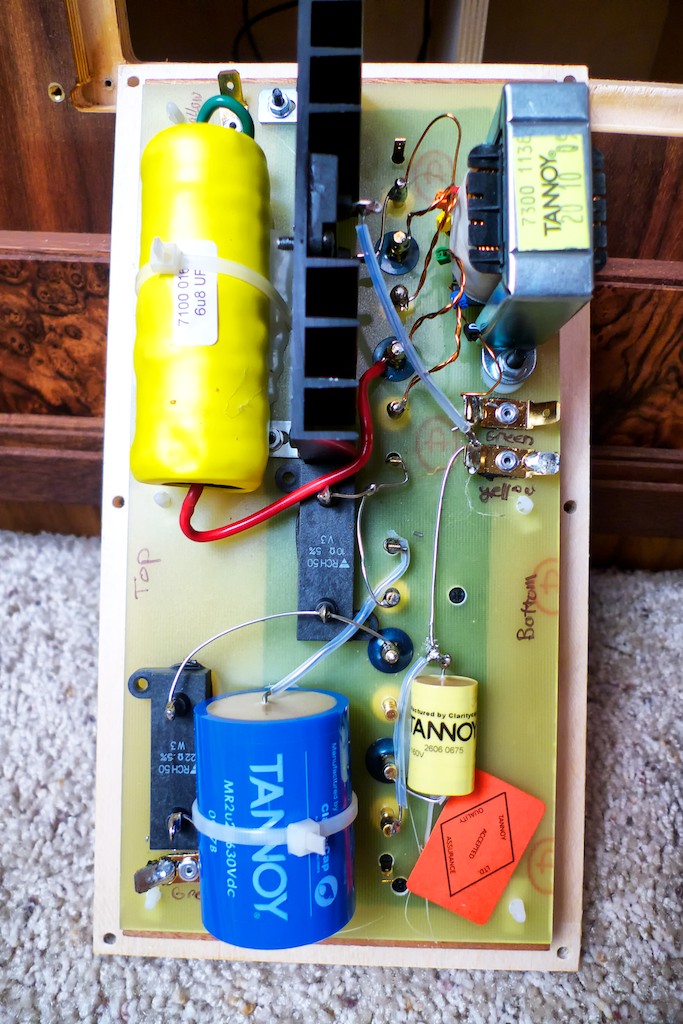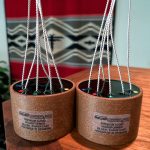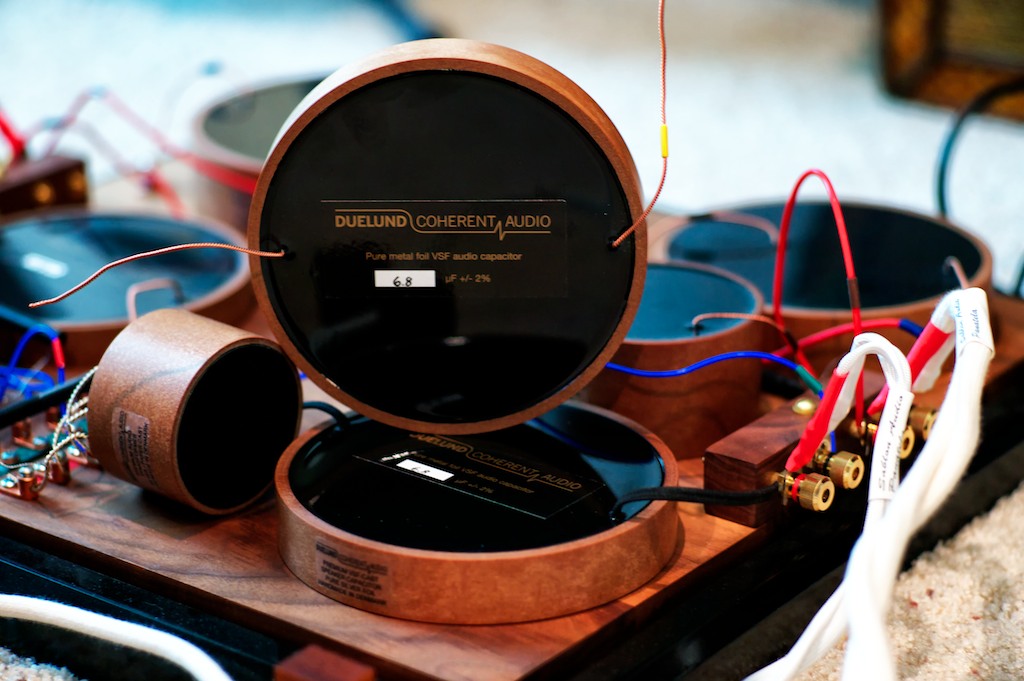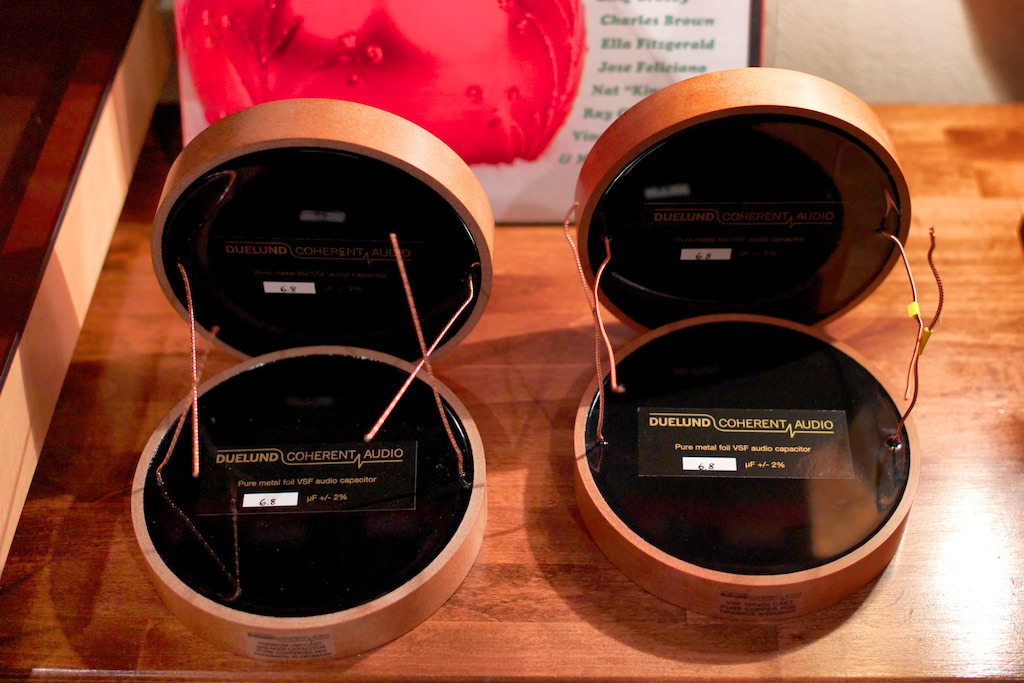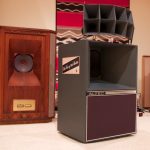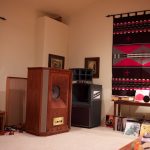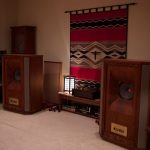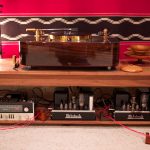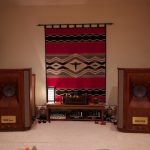I'm on a crossover roll to start off 2016, and now it's time to discuss some exciting developments with the Duelund CAST crossovers that form the beating heart of my Tannoy Westminster Royal SE loudspeakers.
In the The Duelund Coherent Audio / Tannoy Westminster Royal Special Edition Project that I chronicled in real time here at Jeff's Place, ultimately writing up as feature articles for Positive Feedback (Part 1 - Issue 70; Part 2 - Issue 74), the pair of external crossovers I built for my WRSEs out of the ultra-performance Duelund CAST components (capacitors, resistors, autotransformers, and inductors).
I used the exact same circuit design for the low & high-frequency crossovers as the stock crossovers, but I used a full complement of Duelund CAST capacitors, inductors, and resistors in the circuit.
The resulting performance improvement in my WRSEs with the external Duelund CAST crossovers was enormous, shocking even, and the lessons learned were two-fold:
First, all crossovers, even in really, really, good loudspeakers like the Westminster Royal SEs, are built to a price point to make them affordable for production, as in the stock Tannoy high-frequency crossover for the WRSEs shown below.
Secondly, the quality & choice of the capacitors, inductors, autotransformers, and resisters used in the crossovers's circuits determine the ultimate level of performance you can expect to extract out of your loudspeakers, as I found when using the Duelund CAST capacitors, inductors, and resistors.
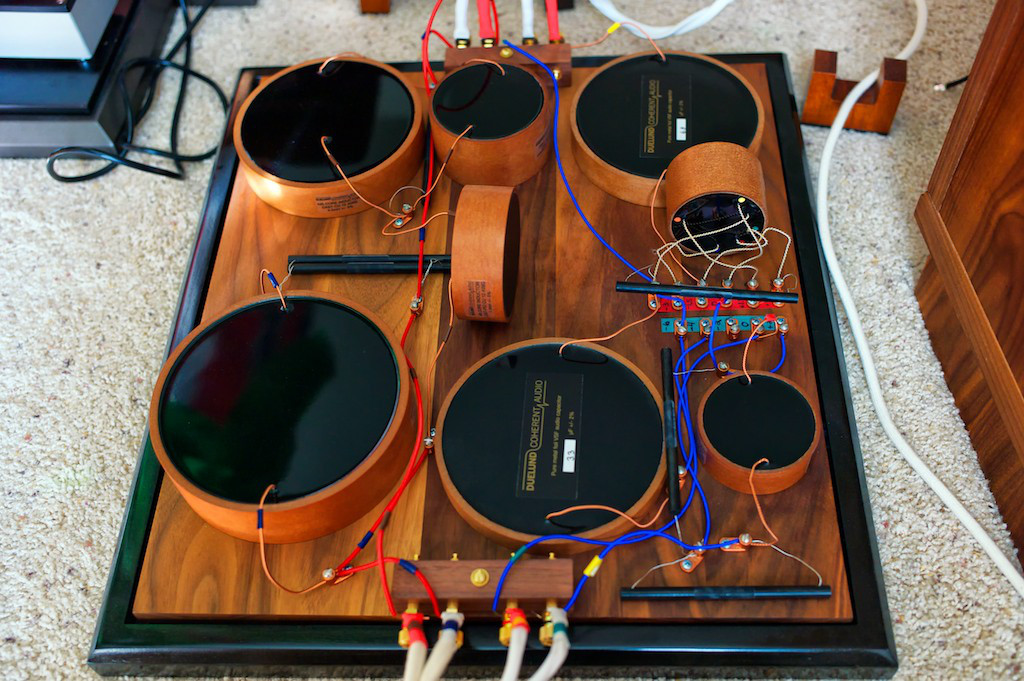
The ultra-quality Duelund CAST capacitors, inductors, autotransformer, and resistors used in the Duelund-Westminster crossover project.
In my Part 1 Duelund-Westminster article I described how I built up the Duelund CAST crossovers, and in the Part 2 article I described what happened when I inserted custom silver Duelund CAST autotransformers & silver Duelund CAST 6.8uF capacitors into the high-frequency crossovers.
- Duelund CAST Silver Autotransformers.
- Duelund pure silver CAST 6.8uF capacitors.
It was another remarkable boost in performance, but particularly in the case of the silver Duelund CAST 6.8uF capacitors, which were over $10K each. Including a pair of those pure silver Duelund CAST 6.8uF capacitors made for a pair of crossovers that cost as much as the Westminster Royal SEs did. Yikes.
As I mentioned back in October, there have been some exciting developments on the Duelund Coherent Audio front: Frederik Carøe announced a new copper & silver hybrid Duelund CAST capacitor that he feels gives a big slice of the ultra-expensive pure silver Duelund CAST capacitors' performance at a price very close to that of the copper Duelund CAST capacitors. That's news!
The current retail price of a 6.8uF copper Duelund CAST capacitor used in the C1 position of my WRSE crossovers is $700 USD, and the new 6.8uF copper/silver hybrid Duelund CAST capacitor is $744 USD. So now you can choose between a copper Duelund CAST capacitor and a copper/silver hybrid Duelund CAST capacitor for essentially what is the same price. That means that you can choose the 'voicing flavor' you want for very little cost impact. That's really good news!
In the photo above you can see the copper Duelund CAST 6.8uF capacitor that's used in the C1 position of the WRSE high-frequency crossover. Right below it is the custom pure silver Duelund CAST 6.8uF capacitor that completely blew my mind when I put it in the C1 position of crossover.
Yes, if you've got big piles of money the custom pure silver Duelund CAST capacitors are worth it, and they have never left the C1 positions of my Duelund-Westminster project high-frequency crossovers after I put them in there to listen to them. They're really, really good.
As a reminder to set the context, the custom handmade pure silver Duelund CAST capacitors are priced at the time of the order (they're available by custom order only), based on the current spot price for silver. At the time I reviewed them the silver spot price put the cost of the 6.8uF Duelund CAST capacitors at $10,289.48 USD each. Breathtaking.
Some readers freaked out at the cost of the custom pure silver Duelund CAST 6.8uF capacitors, and thought it was just blatant profiteering, but it's really just the difference between the cost of the copper & silver used in their construction. I had asked Frederik to break out the costs so everyone would understand what was going on here, and I wrote about it in detail here.
But what if you don't have that kind of money for capacitors? This cost dilemma was not lost upon Frederik Carøe, who went to work on developing a solution that would deliver a big slice of the silver Duelund CAST capacitors’ performance for very close to the cost of the copper Duelund CAST capacitors.
Frederik is very pleased with the solution he has come up with - the copper/silver hybrid Duelund CAST capacitor - and he built me a pair of the new 6.8uF Duelund CAST hybrid capacitors to try in the Duelund-Westminster project crossovers. They arrived just before the Christmas Holiday. Merry Christmas, Duelund style!
Now I’ll be able to compare the new hybrid silver-copper Duelund CAST 6.8uF capacitors to the copper & silver Duelund CAST 6.8uF capacitors in the C1 positions of the Duelund-WRSE project high-frequency crossovers.

Duelund CAST capacitors: copper (left), silver-copper hybrid (middle), and silver (on the crossover).
I've been focusing on the Altec-Lansing A5 Voice of the Theatre project until this morning, so I had to move the big A5 VOTTs out of the system, and move the even more massive Westminster Royal SEs back into the system. Talk about a work out!
- A5 VOTTs
- Moving A5 VOTTs to set back up WRSEs
- WRSE & A5 VOTT
- A5 VOTT & WRSE
- WRSE & A5 VOTT
- Everything back in place ...
- Real Sound modified vintage McIntosh MC 30 monaural amplifiers.
- ... and ready to go!
To give you an idea of the size of these speakers, the clock you see in the back left is over 7 feet tall. They're big! The WRSEs are the heavyweights of the bunch, and probably weigh double what the A5 VOTTs do.
Now that the WRSEs are back in the system, I’ll be telling you a lot more about these new Duelund CAST capacitors. First I'll listen to the new hybrid silver-copper hybrid Duelund CAST capacitor in their just-arrived state, but to be fair I'll need to condition them on my Cooker for a while, as the others - particularly the silvers - have quite a lot of hours on them.
More to come in the very near future – stay tuned!





